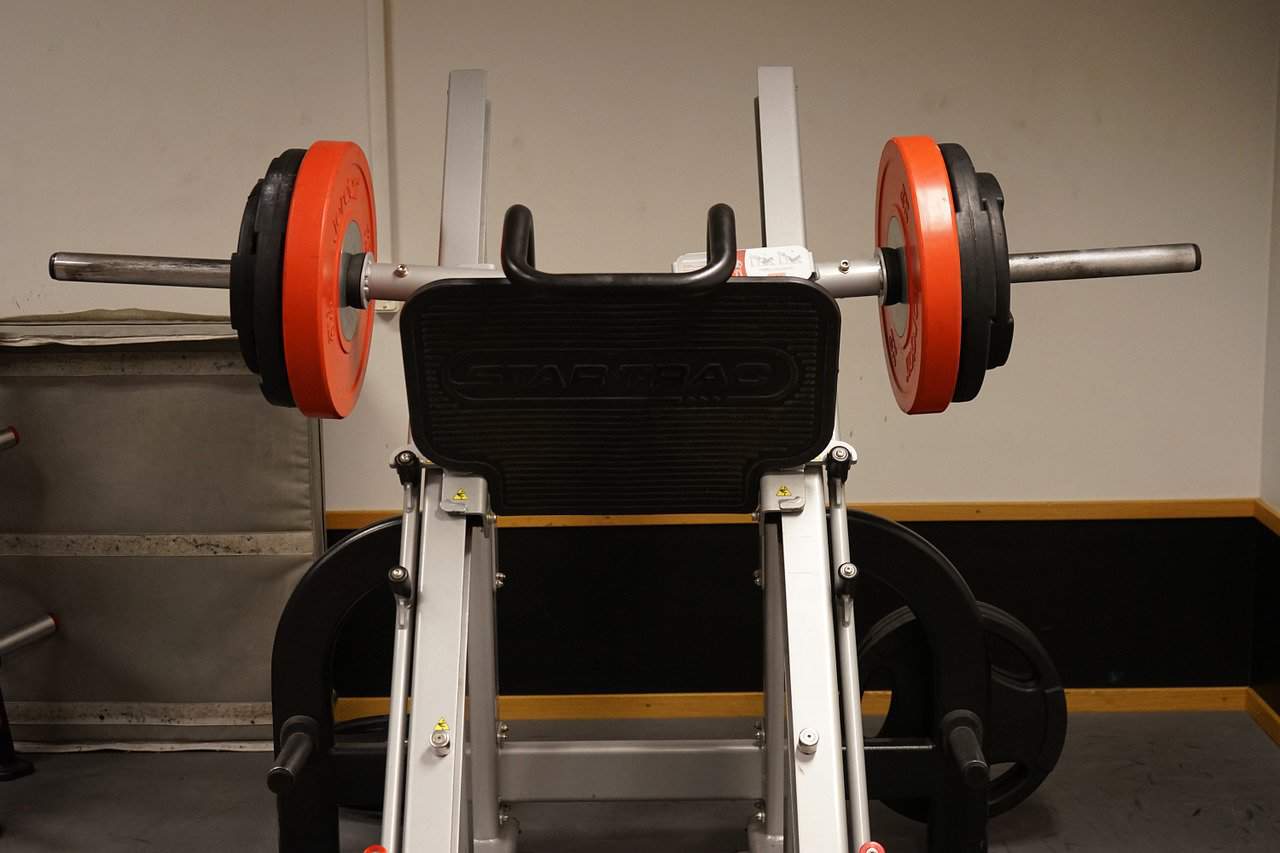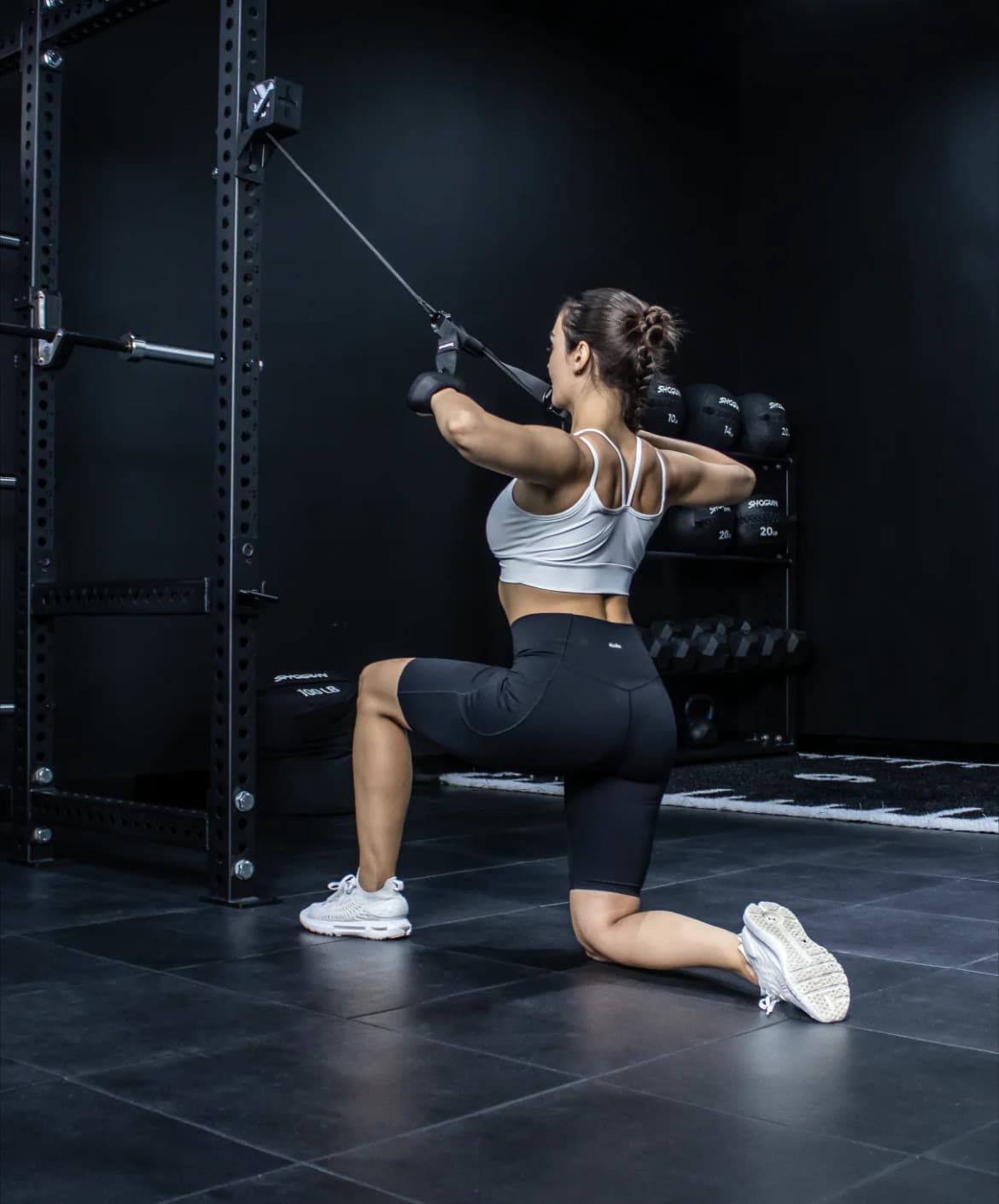Leg extensions are one of the most popular machine exercises you can do in the gym.
Yes, they do target the quadricep muscles, which are the primary muscles involved in the vertical jump, but does this mean we should be cranking out tons of heavy leg extensions?
.
Despite improving quadricep size and strength, leg extensions are relatively ineffective at increasing your vertical jump, mainly because of the lack of specificity to the vertical jump movement.
In this article we’ll dive deeper into the reasons why leg extensions are not the best way to increase your vertical jump, what they’re actually good for, and what exercises you should instead focus on.
Why Leg Extensions Won’t Help Your Vertical Jump Much
The primary reason leg extensions aren’t great for vertical jump training is because they’re an ‘isolation’ movement which requires very limited range of motion, doesn’t activate stabilizer muscles, and has an unnatural load distribution.
In other words, leg extensions lack the aspect of specificity with regards to the vertical jump.
Lack Of Triple Extension
The vertical jump is all about ‘triple extension‘ which is where your hip, knee, and ankle joints all extend in unison creating a full body explosive movement.

Naturally, when training to improve our vertical jump, we need to be focused on doing exercises which replicate triple extension as closely as possible.
Unnatural Load Distribution
When doing leg extensions, there’s no eccentric load on your hips or ankles because of the seated position.
As a result, you’re left with a highly unathletic movement, no activation from stabilizer muscles, and single as opposed to double or triple extension.
.
The best vertical jump exercises are the ones that train at least double extension (hip and knee) and some triple extension where possible.
What Leg Extensions Are Good For
Now just because leg extensions aren’t ideal for vertical jump training, this doesn’t mean you should never do them.
It just means if your focus is on improving your vertical jump, you should spend significantly less time on this machine.
- Great for developing your VMO (teardrop muscle on inside of your thigh) and preventing tendonitis – This is super important for vertical jump aspiring athletes because quite often this muscle is underdeveloped, particularly in younger athletes. Volleyballers, basketballers, and track athletes that suffer from patella tendonitis will often find symptoms improve when they start incorporating leg extensions into their routine to help bulletproof this knee joint.
- Develop size and strength as a finishing exercise – If you’re looking to add some more mass to your legs, you can include leg extensions after the bulk of your compound lower body movements (such as back squats) to help drive bloodflow and promote hypertrophy.
Increase Your Vertical Jump With These Exercises Instead
Two words: compound movements.
Two more words: back squat.

As I discussed earlier, the best vertical jump training exercises mimic triple extension.
This means they generally look somewhat like a vertical jump in nature – note that sitting on a chair swinging your legs back and forth does not look anything like a vertical jump!
Here’s a quick list of far superior vertical jump training exercises to center your workouts around.
Do the vast majority of your training volume with these exercises if you want to jump higher!
- Barbell back squat – This is the big daddy of vertical jump training. With full hip and knee extension and core/stabilization involvement, this is the sort of strength movement you want to be doing.
- Bulgarian split squat – As far as unilateral vertical jump strength movements go, the BSS is the holy grail. Read more about why the Bulgarian split squat is so effective for vertical jump training here.
- Jump squat – This one’s more of a power movement but research has shown the jump squat to be extremely effective at developing vertical jump. It should be pretty obvious why, it’s literally just a weighted jump!
- Power clean – As far as Olympic movements go, the power clean is by far the best for developing vertical jumping ability, for a multitude of reasons. Learn more about why the power clean is an excellent vertical jump exercise here!
- Glute ham raise – When we’re thinking about developing a super strong posterior chain, the single best exercise you can be doing is the GHR because of the huge force you can generate through hip extension.
- Hip thrusts – And to round things out, hip thrusts are the best way to target glutes for vertical jump training – again the focus is on hip extension here.
Do Leg Curls Help Vertical Jump?
Leg curls, just like leg extensions, are not an effective vertical jump exercise because they do not mimic triple extension in any meaningful way.

In fact, leg curls don’t train extension at all.
This is a knee flexion movement which trains the opposing muscle group (hamstrings) to the knee extensors (quads).
This isn’t to say you should never train knee flexion – it’s super important to make sure these opposing muscle groups are well balanced – and I highly recommend training the hammies a lot, but when it comes down to brass taxes, it’s the leg extensors that are going to have a bigger jump carryover.
You can do all the leg curls you like as finishers or accessory movements, but you shoulda void having this as a primary focus for any of your vertical jump training sessions.
What About Leg Press?
Leg press is another one I get asked about all the time.
In my article ‘Does Leg Press Increase Vertical Jump‘ I explain in much greater detail why it also falls into the bucket of inefficient vertical jump training exercises.

There’s actually a good amount of science on this one, which I unpack in the above article.
But essentially it boils down to the same thing: no load on the hips or ankles, and only knee flexion and extension.
It’s impossible to perform a vertical jump without load on the hip joint, but exercises like the leg press and leg extension neglect this reality.
Concluding Remarks
So by now it should be pretty clear that leg extensions are not a particularly worthwhile vertical jump exercise, primarily because of how poorly it replicates triple extension.
Having said that, I still do leg extensions fairly regularly at the end of my leg workouts to give my VMOs some extra attention, which helps stave off patella tendonitis.
So it’s perfectly fine to do occasionally, but you should never think of the leg extension as a primary exercise in any vertical jump training workout.
To make sure you’re choosing the most effective exercises to maximize your vertical jump, be sure to check out my roundup of the best vertical jump programs for 2023.























